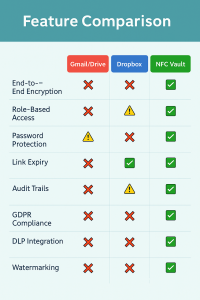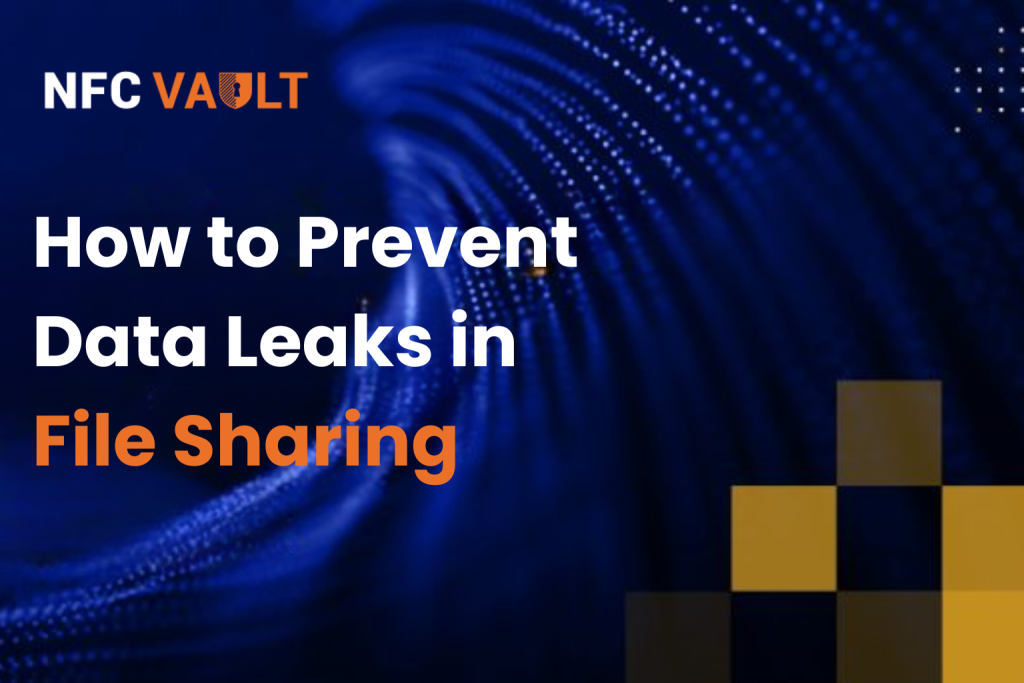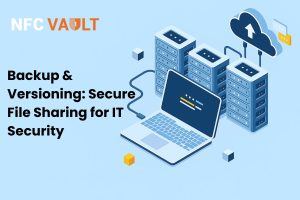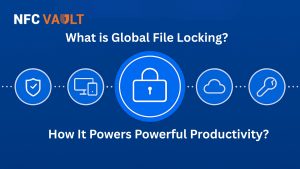In the era of cloud computing and remote collaboration, businesses are exchanging data at lightning speed. Sales presentations, invoices, contracts, and sensitive client records—digital file sharing is a matter of daily life.
With speed and ease, you also lose security.
Every file shared is an opportunity for data theft, leakage, or unauthorized access. According to the IBM 2024 Cost of a Data Breach Report, a misconfiguration, human error, and insecure practices, including improper file sharing, are among the primary reasons for data breaches, many of which can be averted by proper access controls and file encryption.
https://www.ibm.com/reports/data-breach
Let’s think about this:
Are you still using plain email for document transmission?
Are you using Google Drive or Dropbox with open links?
Do your shared links expire? Are they password protected?
If no — you are vulnerable.
This blog is a complete guide to data leak prevention while sharing files, especially for modern companies. You’ll learn why there are leakages, how to prevent them, and why NFC Vault will be the most secure file-sharing platform for enterprises by 2025.
Understanding Data Leaks in File Sharing
A data leak is an event wherein sensitive information gets exposed either deliberately or accidentally to unauthorized persons. There can be leaks at many levels when it comes to file sharing:
- Unencrypted Files: Shared through email or third-party applications
- Open Access Links: Anybody having the link can access/download the files
- Weak or No Authentication: Allowing interested intruders to easily log in
- Re-sharing Without Consent: Cares less if the recipient forwards documents
- Loss of Visibility: No visibility of who opened the file or when
Real-World Instances of File-Sharing Mishaps
- Healthcare Firm Fine – $2.2 Million An employee mistakenly sent patient records to the wrong recipient by way of email. The data was neither encrypted nor password-protected.
- Tech Startup Data Breach Product documents were shared on Google Drive with Public accessibility. The competitors downloaded confidential R&D files.
- Law-Firm Violates GDPR Nonexistent access controls and expired credentials theoretically allowed unauthorized users to gain access to a client’s contract — thus failing to be compliant.
These examples aren’t rare. Such incidences occur daily—and loss extends beyond mere money. Businesses lose trust, reputation, and undergo legal scrutiny.
Best Practices to Prevent Data Leakage While Sharing Files
Your ultimate checklist includes the following:
- Use Encrypted File Sharing Tools
Always select a platform offering end-to-end encryption (E2EE). This means that even if someone intercepts the file, it is impossible to read its contents.
- NFC Vault encrypts files upon uploading, transit, and storage.
- Maintain Role-Based Access Control (RBAC)
Users with certain roles should be able to access files. Limit what they can do to viewing, downloading, editing, or sharing.
- NFC Vault allows you to curate user roles, along with document-level access permissions.
- Set Expiry Dates to Shared Links
Never keep active links for a very long time; always time-limit your URLs to self-expiry.
- NFC Vault allows you to set expiry dates with a few clicks.
- Set Passwords on Files
An additional layer of defense for file links is a strong password in case of a leak.
- NFC Vault can be used to password-protect a document.
- Track Files in Real Time
Find out who accessed the file, when, from where, and what they did in the file.
- NFC Vault offers audit trails, activity logs, and real-time alerts.
- Block Downloading, Printing & Forwarding of Files
Allow “View only” view mode for highly sensitive documents so no download or screen capture can take place.
- NFC Vault affords watermarking and print restrictions for confidential documents.
- Integrate With DLP
Stop the accidental sharing of PII, financial records, or intellectual property.
- NFC Vault can act alongside enterprise-grade DLP solutions.
- Use MFA (Multi-Factor Authentication)
A password and, perhaps, a simple challenge question are not enough; there has to be some kind of second layer of login protection.
- NFC Vault provides built-in MFA for both admin and user accounts.
- Restrict Re-sharing & Limit Device Access
Block document forwarding and allow document access only from certain IP addresses or devices.
- NFC Vault supports IP restriction along with device tracking and geo-fencing.
- Review File Access Regularly
Review periodically to see what has been given to whom. Remove any with expired/unused permissions.
Pro Tip: Avoid Free Tools for Business File Sharing
Using email attachments, Dropbox, or Google Drive to share private company information? Rethink your thoughts.
They lack enterprise-grade compliance and control, but they work well for personal use.

You get complete control, complete visibility, and zero-trust security with NFC Vault.
NFC Vault: The Best Platform for File Sharing & Security
In addition to being a file-sharing tool, NFC Vault is a complete document security platform that businesses in a variety of sectors, including BFSI, healthcare, law, government, and education, trust.
In conclusion, only NFC Vault provides modern businesses with total protection.
Use Case: NFC Vault Helps Law Firm Protect Client Contracts
A mid-sized law firm was having trouble adhering to GDPR and frequently exposing data through Google Drive and email.
- They had complete control over who could access what after moving to NFC Vault.
- Their compliance reporting was made simpler by audit trails.
- Unintentional leaks were avoided by using view-only settings and expiry links.
The outcome was three times faster legal contract delivery with client confidence and zero data incidents reported in a year.
Sectors That Gain the Most from NFC Vault
- Banking & Finance: Safely exchange KYC, statements, and legal documents
- Healthcare: Securely send prescriptions, medical records, and reports
- Legal & Compliance: Safeguard client documents, agreements, and affidavits
- Enterprise and SMBs: Handle sales, policy documents, and human resources
- Education: Exchange exam results, certifications, and student data
Compliance with Data Simpled
By using NFC Vault, you maintain compliance with:
✅ EU GDPR
✅ HIPAA (Medical)
✅ ISO 27001
✅ Type II SOC
✅ Payment Data (PCI-DSS)
You can easily pass audits with the help of NFC Vault’s audit logs, access trails, user activity insights, and data governance tools.
You can also read this blog: How to Share Large Files Securely with GDPR Compliance
Frequently Asked Questions (FAQs)
Q1. Is it possible to share files externally using NFC Vault?
Yes! With complete control over permissions, you can safely share files with partners, clients, and vendors.
Q2. What happens if someone accidentally shares a file with the incorrect person?
To prevent assault NFC Vault enables you to use access restrictions, set link expiration, and instantly revoke access.
Q3. Can small businesses use NFC Vault?
Of course. Regardless of your company’s size, NFC Vault can grow with you.
Q4. Which platforms are compatible with NFC Vault?
Active Directory, DLP programs, SIEM tools, and other integrations are supported.
Sharing files is now about accountability as much as convenience.
Businesses need to prioritize secure file sharing in an environment where cyber threats are increasing in order to safeguard sensitive data, maintain compliance, and foster trust.
NFC Vault is intended to be your digital stronghold, safeguarding your data from threats, leaks, and abuse while guaranteeing safe and easy collaboration.



